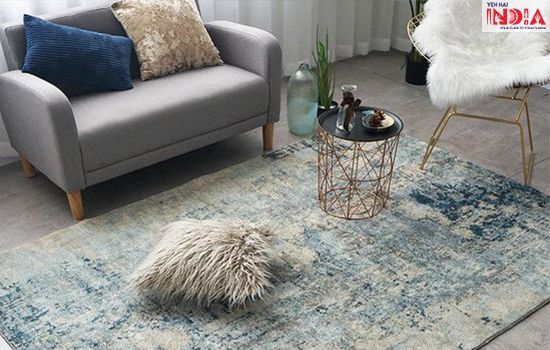The front door gets a lot of attention in home selling advice, but buyers form their first impression long before they reach it. From the moment they pull up to the curb or see listing photos online, they’re already making judgments about the property based on dozens of small visual cues. Most sellers focus on the big things—fresh paint, nice landscaping, maybe new house numbers—but miss the smaller details that actually signal whether a home has been cared for or neglected.
These aren’t usually major issues that would kill a sale on their own. But they add up to create an overall impression that’s hard to shake. A property can have a beautiful lawn and still look unkempt if certain areas are ignored. Understanding what catches buyers’ eyes helps sellers prioritize the maintenance that actually matters for that crucial first impression.
The Surfaces That Tell the Real Story
Driveways, walkways, and porches reveal more about property maintenance than most people realize. These hard surfaces frame the approach to a home, and when they’re covered in leaves, dirt, grass clippings, or other debris, they send a clear message that maintenance has been slipping.
The problem is that these surfaces collect stuff constantly. Wind blows leaves into corners. Mowing spreads grass clippings across concrete. Pollen settles on everything in spring. Trees drop seedpods, flowers, and branches throughout the year. What looks clean one day can look messy three days later, especially during fall when leaves come down faster than anyone can keep up with them.
This is where having the right approach to cleanup matters. Raking and sweeping work but take forever and still miss debris in cracks and crevices. A leaf blower vacuum handles these surfaces more thoroughly in less time, clearing everything from heavy leaf piles to fine dust that settles along garage doors and entryways. The vacuum function pulls debris out of textured concrete and corners where it tends to collect, which matters more for curb appeal than people expect.
Clean surfaces make everything else look better. The same landscaping that looks decent with debris scattered around suddenly looks professional when the surrounding hardscaping is spotless. It’s not that the plants changed—it’s that clean walkways and driveways create visual order that makes the entire property appear more maintained.
The Gutter Problem Nobody Sees Until It’s Obvious
Gutters filled with leaves and debris might seem like a minor issue since they’re high up and not always immediately visible. But overflowing gutters create noticeable problems that buyers absolutely pick up on. Staining on siding below gutters, water marks on windows, foundation issues from improper drainage—these all trace back to gutters that haven’t been cleared.
Even without visible damage, full gutters just look bad. Leaves and twigs sticking out over the edge, sagging sections weighed down by wet debris, plants actually growing out of clogged downspouts—buyers notice these things during showings and while examining listing photos. It signals deferred maintenance, which makes them wonder what else hasn’t been kept up.
The timing makes this tricky. Cleaning gutters once in fall doesn’t cut it when trees keep dropping leaves for weeks or months. By the time the gutters are cleaned again, buyers might have already seen the property in its messy state. Regular clearing throughout fall and after storms keeps them presentable when showings happen.
Corners, Edges, and the Places Debris Hides
Property edges tell their own story about maintenance. The spots where the driveway meets the garage, where walkways border flower beds, the corners of porches and patios—these areas accumulate debris that creates visual clutter even when the main surfaces are clear.
Dead leaves wedged along fence lines, grass clippings piled against foundation walls, seedpods collected in door thresholds—individually these seem trivial. Together they create an impression of neglect that contradicts whatever effort went into the lawn or landscaping. Buyers might not consciously register each small pile of debris, but they register the overall feeling that things aren’t quite tidy.
The frustrating part is how quickly these spots fill back up after cleaning. Wind and weather constantly push material into corners and against vertical surfaces. Manual cleaning of these areas takes significant time and often doesn’t get everything, especially the smaller particles that contribute to the overall dingy appearance.
This is another area where cleanup method matters. Blowing debris out of corners works better than trying to sweep or rake these tight spaces. But just blowing everything into the yard creates new piles that still need dealing with. Collection as part of the cleaning process actually removes material from the property rather than just relocating it, which makes a bigger difference for overall appearance.
What Listing Photos Actually Show
Most sellers think about curb appeal in terms of what buyers see in person, but listing photos often create the first impression these days. And cameras are unforgiving when it comes to debris and clutter on driveways, walkways, and around entryways.
What looks acceptable in person can photograph poorly. Scattered leaves on a driveway might not seem like a big deal when you’re standing there, but in a photo they create visual noise that distracts from the home itself. Buyers scrolling through listings make snap judgments based on these images, and a cluttered exterior often means they never schedule a showing to see the property in person.
Professional listing photographers sometimes edit out minor debris, but they can’t fix genuinely messy conditions without it looking obvious. And not all listings get professional photos—plenty still use realtor phone pictures or homeowner snapshots where debris shows up even more prominently.
The timing of listing photos adds pressure. The shoot happens on a specific day, often with little flexibility. If that day happens to be after a windy night that scattered debris everywhere, or during peak leaf fall, the property better be photo-ready regardless. This means having a maintenance approach that can bring surfaces from messy to clean quickly, not methods that require hours of manual labor.
The Yard-to-Hardscape Transition
Where the lawn ends and pavement begins creates another visual checkpoint for buyers. This transition should look crisp and intentional, but often becomes a catch-all for grass clippings, mulch that’s migrated from beds, and leaves that have blown against edges.
Edging helps define this boundary, but debris accumulation along the edge undermines the effect. A perfectly edged lawn with grass clippings piled along the driveway still looks messy. The same goes for mulched beds—the mulch itself might look fresh, but if there’s a drift of leaves and dirt along the concrete border, the overall impression suffers.
This transition zone gets hit from both directions. Lawn mowing kicks clippings onto pavement. Rain washes soil and mulch from beds onto walkways. Leaves blow from both directions and collect at the boundary between surfaces. Keeping this line clean requires addressing it from both the landscaping side and the hardscaping side, which most maintenance routines don’t account for.
Seasonal Challenges That Never Stop
Different seasons create different debris problems, but none of them take a break. Spring brings pollen, flower petals, and seedpods. Summer means grass clippings and dust. Fall is obviously leaves but also nuts, pine cones, and branches. Winter has its own issues with dead plant material and debris from storms.
Properties never look their best naturally—maintaining good appearance requires consistent effort year-round. But most people’s maintenance routines are seasonal. They focus on spring cleanup, maybe do something in fall for leaves, and ignore other times of year. This creates periods where the property looks neglected even if the owners are generally on top of things.
The challenge is finding maintenance approaches that work efficiently enough to use regularly. Methods that take hours of physical labor only happen occasionally, which means properties often look messy. Faster cleaning that can be done in 15-20 minutes gets done more often, keeping the property presentable rather than cycling between perfect and neglected.
When Buyers Walk the Property
During actual showings, buyers don’t just look at the house—they walk around it. They check out the backyard, inspect the sides of the house, peer at the foundation, look at garage doors and shed areas. All the spaces that don’t show in listing photos get scrutinized in person.
These areas often get less attention than the front of the property, which means they’re where debris problems become really obvious. Leaves piled against the back door, gutters overflowing on the side of the house, debris scattered across the patio—buyers see this and make assumptions about overall property care.
The maintenance that shows buyers a well-cared-for home isn’t complicated, but it is consistent. Clean surfaces, clear gutters, edges and corners free of accumulated debris—these create an impression that the property has been looked after. That impression translates directly into perceived value, which affects offers and negotiations in ways that are hard to quantify but definitely real.








